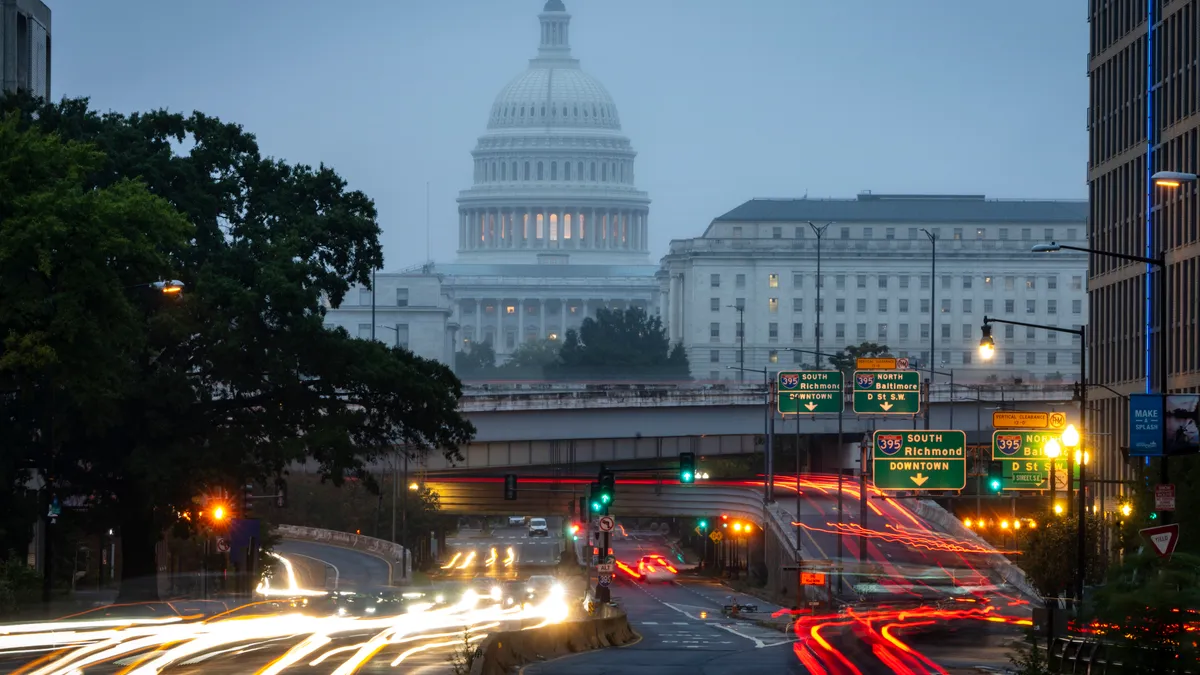Dive Brief:
- Beginning next April, all new buildings and major retrofits constructed by the federal government must comply with more stringent energy code requirements, a move that the Department of Energy estimates will save $4.2 million in operating costs in the first year.
- Federal projects will be constructed to meet 2021 International Energy Conservation Code and the 2019 ASHRAE Standard 90.1 codes, DOE announced Wednesday morning in a press release shared with Construction Dive.
- The federal government is the single largest building owner and manager in the United States, with a portfolio of more than 350,000 buildings totaling more than 3 billion square feet of floor area across the country, according to the American Council for an Energy Efficient Economy.
Dive Insight:
Designed for HVAC professionals, the 2019 edition of ASHRAE’s Standard 90.1 code includes more than 100 energy-focused updates since the last edition was published in 2016. In addition, the 2021 IECC incorporates significant changes over the 2018 edition, including:
- Increased insulation requirements and reduced fenestration U-factors and solar heat gain coefficients for both residential and commercial provisions.
- Updated mechanical equipment efficiency requirements, new provisions for data centers and plant growth lighting.
- Increased lighting efficacy and decreased lighting power density requirements for commercial buildings.
The Wednesday announcement builds upon the priorities of the Infrastructure Investment and Jobs Act, which includes $225 million for state and local implementation of energy codes. It follows the launch of the White House’s Building Performance Standards Coalition, a partnership between more than 30 city and county governments along with the states of Colorado and Washington.
The goal of the partnership, announced in January, is to advance legislation or regulation in each of those jurisdictions by April 22, 2024.
In addition to the federal building standards, the DOE is seeking comment from stakeholders on two proposed residential-focused rules focused on room air conditioners and pool heaters and will hold a public meeting to solicit feedback from industry and energy-efficiency stakeholders, according to the release.
Together, DOE estimates the new codes and proposed standards announced today can potentially save more than $15 billion in net costs over the next 30 years.














